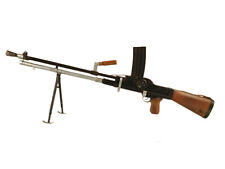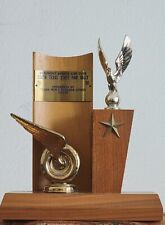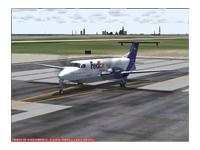By Pablo Teodoro.
Fsplanet.com’s reviewer
FEATURES:
A flyable formation of four BAe Hawk Mk.60 aircraft of the Saudi Arabian Air Force’s Display Team, the “Saudi Hawks”. Formation features revolutionary display animation controlled by the user. Based on a GMAX design by Mikko Maliniemi, with base textures and modifications for display team packaging by Kari Virtanen. Aircraft have display smoke effects, full lighting, reflective transparent cockpits and moving parts.
Photoreal panel by Mark Beaumont features excellent visibility, side panels, animated mirrors by Kari Virtanen with following aircraft, many specially made gauges by Matt Kaprocki, HUD and TCAS Radar by Eric Marciano.
Defaults to Lear45 sound: recommended sound package REDPACK5.ZIP. Accurate Hawk checklist and sample chart display. Detailed ‘Saudi Hawks’ livery, operational notes and overall packaging by Mark Beaumont.
TECHNIC COUNTER
Two-seat lead-in trainer
COUNTRY OF ORIGIN: United Kingdom
ENGINE: Rolls-Royce / Turbomeca Agour Mk.871 turbofan rated at 5,845 lb st.
DIMENSIONS:
SPAN (Normal): 30 ft 9¼ in / 9.39 m.
SPAN (missile tips); 32 ft 7 in / 9.93 m.
LENGTH: 38 ft 4 in / 11.68 m.
HEIGHT: 13 ft 1¼ in / 3.99 m.
PERFORMANCE:
MAX. SPEED; 645 mph / 1,038 kph at 36,000 ft./10,975 m
INITIAL CLIMB: 11,800 ft / 3,597 m. per min.
MAX. RANGE: Over 1,612 mls / 2,594 km. with two drop tanks
SERVICE CEILING: 44,500 ft / 13,545 m.
CREW: 2
ARMAMENT: Up to 6,614 lb./3000 kg external stores.
WEIGHTS:
EMPTY WEIGHT: 9,700 lb / 4,400 kg
MAX. TAKEOFF: 20,061 lb / 9,100 kg
CREW: 2
RAAF SERVICE: 2000-
Initially with 76 Sqn. (2000), joined by 79 Sqn. late in 2001.
The BAE Hawk 100 series appeared, in the mid-1960s, as a moderately priced dual-role trainer and ground attack and combat capable development of the Hawk Mk.60, with uprated power plant and increased wing span adapted to carry a variety of stores. Slight sweep introduced to the leading edge meant the strengthened wing did not upset the aircraft’s centre of gravity.
Extra nose length allowed accommodation of various sensors.
The Hawk Mk.100 first flew in October 1987. Initial sales of the Mk.102 were made to Abu Dhabi, followed by Hawk Mk.103’s to Oman and Mk.108’s to Malaysia in 1990. Indonesia also obtained the Mk.108, and Malaysia ordered further Mk.109s.
The RAAF placed an order for 33 Hawk 100 series aircraft in mid-1997. These were to be delivered as 12 British-built aircraft and 21 locally assembled, during 2000. The first Australian-built machine flew at Williamtown, NSW on May 12, 2000. The first two British-built deliveries reached Williamtown, NSW in early September, 2000. By the end of the year roughly half the order had been delivered, and most sported a two-tone grey camouflage with the lighter tone used for the low-vis national markings. They were allocated serials in the A27- range.
South Africa also placed an order for 24 Hawk Mk.100 series aircraft in 1998, for use as lead-in trainers.
HAWK ORIGINS
n the early 1960s, the British Royal Air Force (RAF) was operating two jet trainer aircraft: the Hawker “Hunter T.7” two seat side-by-side trainer, and the Folland “Gnat T.1”.
The Hunter trainers were well liked, but they were also expensive to operate; had limited endurance; and their side-by-side seating arrangement was increasingly seen as outdated. Side-by-side seating is well suited for primary training, since it gives the instructor a close view of what the student pilot is doing, but is poorly suited to advanced training, as it creates a cockpit environment that is dissimilar to that of the single-seat aircraft the student is presumably being trained to fly.
Although the Gnat T.1 was appreciated for its agility and good handling and achieved recognition as the mount for the RAF Red Arrows aerobatic display team, it suffered from high maintenance overhead; a cramped cockpit that could not accommodate tall pilots, and left the flight instructor straining to see forward through the back of the student’s head; and no weapons training capability.
In 1964, the RAF released a draft requirement for a trainer to replace both the Hunter trainers and the Gnat T.1, with the designation “Air Staff Target (AST) 362”. Transition to the new trainer was to begin in the mid-1970s. In step with the spirit of the times, the new trainer was to have a top speed of Mach 1.5, as it hadn’t been realized at that time that the benefits of a supersonic trainer did not really outweigh the drawbacks of higher purchase and operation costs.
Then international politics intervened. The French were also interested in a new trainer to replace their Lockheed T-33 “T-birds” and Dassault Mystere IVs, and a round of typically complicated Anglo-French negotiations followed.
These discussions led off in one direction to the Anglo-French SEPECAT Jaguar, which was originally conceived as useful both as a trainer and as a strike aircraft. Ultimately, the Jaguar became very much a competent strike fighter, but was simply too much aircraft for flight instruction. Tandem seat Jaguars were built, but they were used for operational conversion, not flight instruction.
Another offshoot of this round of discussions were a series of proposals made to the RAF in 1968 by Hawker Siddeley Aircraft (HSA) for a jet trainer. By this time, the RAF’s focus had shifted somewhat towards a replacement for the Jet Provost T.5 trainer, and HSA was also looking very seriously at the broader international market to replace aging trainers such as the Jet Provost, T-33, and Macchi MB.326. The estimated market for new jet trainers was estimated at thousands of aircraft, excluding the US, which rarely “bought foreign”, and the Eastern Bloc, where political barriers ruled out the sale of Western aircraft.
In 1969, the British Ministry of Defense gave the ball another push by issuing requirement “AST.397” for a tandem seat, single engine, subsonic jet trainer with weapons capability and an unprecedented 6,000 hour fatigue life. This specification was open to international competition and was by no means written around the HS.1182 specification, but gradually the competition, in the form of aircraft such as the Dassault-Dornier Alpha Jet and proposals by British Aircraft Corporation (BAC), fell out, and in October 1971 the HSA proposal was accepted. This led to a production contract early the next year for 176 trainers, with the first to be delivered in late 1976.With the beginning of full scale development, HSA assigned Gordon Hudson as chief designer, and confusingly assigned Gordon Hodson as the assistant chief designer. Both men were ex-Folland personnel.
The design was given the name “Hawk”, although traditionally trainers had, logically but a bit stuffily, been named after educational establishments. However, “Hawk” was a simple name, and easy to put in flight logbooks; the RAF Staff College emblem featured the Egyptian hawk god Horus; and apparently there were officials who thought that naming aircraft after universities was a bit stuffy, too, or at least wouldn’t have much appeal for export sales.
The first “Hawk T.1”, painted in snappy red and white colors, flew on 21 August 1974, with test pilot Duncan Simpson at the controls. It was the first of many more to come.
Comment
Welcome again after a few days that I haven’t done a review for FSPLANET.com. I miss doing reviews so I have come back. This time I have done a review on the BAe Hawk Mk.60 aircraft of the Saudi Arabian Air Force’s Display Team, the “Saudi Hawks”. It has been a good expirience piloting four excellent figthers. This figthers are in a perfect formation. If you presss the flaps botton on your keboard the two figthers on both sides of their formation will move and they will form a rumbus shape. Another movement there is in this excellent file is that if you press the air brake botton the four planes will make another type of shape. There is another point to say that is that if you get the lights on and you see the four planes from the control tower it loooks like if there were christmas lights in the air, it is a very nice “picture”.
The only I have found is that for me it is very dificult to to make it land, maybe you are better than me try. After all this plane has a normal maniobrability and good design.
My rating is 9/10.




































